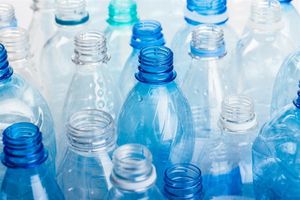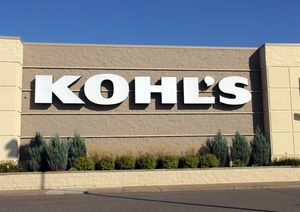Pharmaceutical packaging plays a role far beyond aesthetics or convenience. It is the first line of defense between sensitive medicines and the external environment. Every vial, blister pack, or ampoule must not only preserve the chemical stability of its contents but also guarantee safety for patients who depend on them.
Unlike consumer goods packaging, where the focus may be on branding or design, pharmaceutical packaging has life-or-death implications. A compromised package can lead to contamination, reduced potency, or complete ineffectiveness of the medication. For healthcare providers and patients alike, trust in medicine begins with trust in its packaging.
Common Challenges in Pharma Packaging
Despite stringent regulations and advances in packaging technology, challenges remain. Pharmaceutical products are often fragile, reactive, or highly sensitive to air and moisture. Packaging failures can result from several factors:
-
Contamination Risks: Microscopic leaks allow bacteria, air, or moisture to penetrate sterile packaging.
-
Fragility of Containers: Ampoules and vials, while effective at maintaining sterility, are prone to cracks or hidden defects.
-
High Distribution Demands: Medicines travel long distances across varying climates, increasing the risk of damage in transit.
-
Production Errors: In high-speed manufacturing environments, even minor flaws in sealing or material quality can compromise entire batches.
Each of these challenges highlights why rigorous packaging quality control is vital to the pharmaceutical industry.
Key Technologies Supporting Packaging Safety
To counter these risks, pharmaceutical companies employ advanced technologies that ensure the integrity of packaging. These include:
-
Automated Visual Inspection: Detects cracks, chips, or seal defects that might be missed by the human eye.
-
Vacuum and Pressure Testing: Confirms that seals and closures can withstand stress and maintain sterility.
-
Leak Detection Systems: Identify micro-leaks invisible to external inspection but capable of compromising safety.
-
Serialization and Track & Trace: Adds security layers to packaging, preventing counterfeiting and ensuring traceability.
Together, these systems create a multilayered safety net, ensuring that only defect-free packaging leaves the production line.
Leak Detection for Ampoules
Ampoules are among the most widely used pharmaceutical containers, valued for their sterility and durability. However, they are also fragile and highly susceptible to micro-cracks or seal imperfections that can compromise safety. Because ampoules often contain injectable medicines, even the smallest leak can pose a serious health risk.
This is where advanced leak detection systems become critical. Solutions such as Seal check offer specialized ampoule leak detectors designed to identify flaws invisible to the naked eye. By ensuring that every ampoule is perfectly sealed, these systems protect patients from contamination, preserve the efficacy of the medicine, and reduce the risk of costly recalls for manufacturers.
Incorporating such technology not only improves compliance with strict regulatory standards but also builds confidence among healthcare providers and patients.
Regulatory Standards Driving Packaging Integrity
Pharmaceutical packaging is subject to some of the strictest regulations worldwide, reflecting the high stakes of patient safety. Agencies such as the U.S. Food and Drug Administration (FDA), the European Medicines Agency (EMA), and organizations like the United States Pharmacopeia (USP) enforce rigorous packaging standards.
Key regulatory focuses include:
Seal Integrity Testing: Required for sterile products to ensure no contamination risks.
Leak Detection Compliance: Systems must meet ASTM and ISO standards for pharmaceutical packaging validation.
Sterility Assurance Levels (SAL): Ensuring packaging can consistently protect products throughout their shelf life.
Documentation and Traceability: Every step of packaging inspection must be recorded and verifiable during audits.Manufacturers who fail to comply risk not only product recalls but also regulatory sanctions and long-term reputational damage.
The Future of Pharmaceutical Packaging
The pharmaceutical industry is evolving rapidly, and packaging is no exception. Several trends are shaping the future of pharmaceutical packaging integrity:
-
Smart Packaging: Incorporating IoT sensors that track temperature, pressure, and integrity during distribution.
-
Artificial Intelligence: AI-driven inspection systems capable of predicting where packaging failures are most likely to occur.
-
Sustainability Goals: New eco-friendly packaging materials are being developed, though they must be carefully tested to ensure they match the safety of traditional materials.
-
Personalized Medicine: Smaller, specialized drug batches require equally adaptable packaging solutions and quality control methods.
As these innovations progress, packaging quality control systems—such as leak detection—will remain central to ensuring that new solutions meet both sustainability and safety demands.
Packaging as the Final Safeguard
Pharmaceutical packaging is more than just a vessel; it is a critical safeguard that ensures medicines reach patients in perfect condition. The stakes are high: even the slightest defect can compromise safety, efficacy, and trust.
By adopting advanced quality control technologies, manufacturers protect not only their products but also the people who rely on them. Systems like Seal check illustrate how leak detection innovations contribute to stronger compliance, fewer recalls, and safer healthcare outcomes.
In the end, pharmaceutical packaging must be viewed not as a cost but as an investment in patient safety, regulatory compliance, and long-term brand credibility. For manufacturers, prioritizing packaging integrity is not optional—it is the foundation of responsible and sustainable success.
Media Contact
Company Name: seal-check.pro
Contact Person: Dived
Email: Send Email
Country: United States
Website: seal-check.pro






